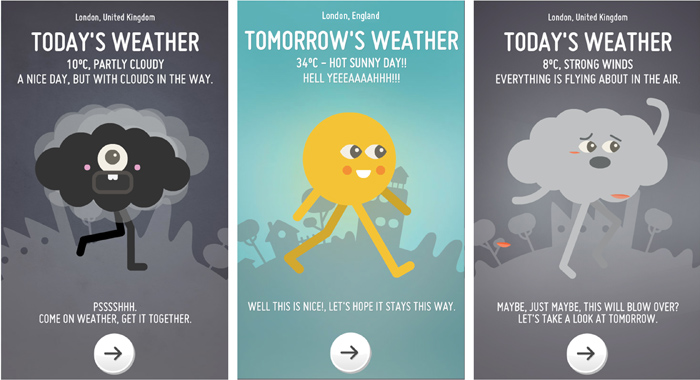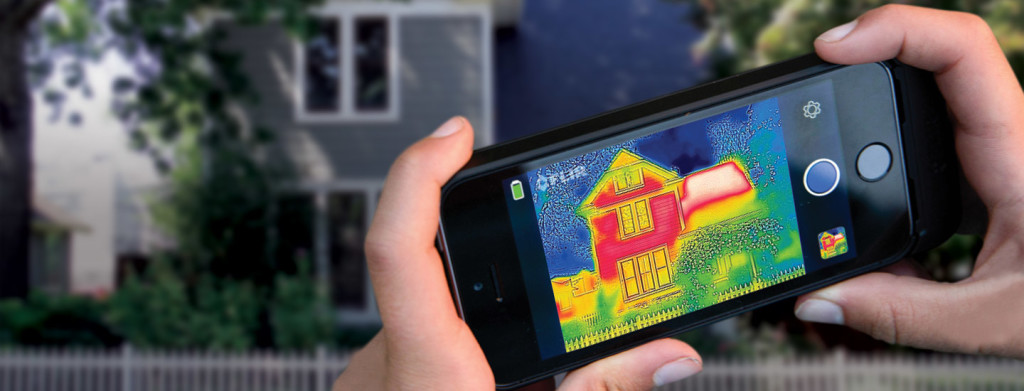Temperature is the objective measure of how hot or cold something is.
Examples:
- A device may measure the temperature of the environment or user for a specific purpose. For instance, thermal vision allows you to see a landscape by heat.
- Measuring temperature could be used to activate a system. Thermostats are an example of this. Nest thermostat is celebrated for bringing elegant industrial and interaction design combined with machine learning to their thermostat product.
- After prolonged use, a device itself might become very warm to the touch. We know that this is the heat put off by the mechanics of the device. From prior experience, we might believe that our device needs a rest so that it doesn’t overheat. Therefore, changing our interaction.
FLIR ONE thermal vision for your smart phones to allow your devices to capture thermal information about the environment.
Informational
As a measurement, temperature provides a unit of information that can inform a user who is familiar with the metric. A digital device that measures temperature and presents that information for a user is using temperature informatively. For instance, a temperature may be measured in Fahrenheit might be very informative to one person, but not informative to a person used to Celsius.
Orientational
Temperature can be used to orient through thermal vision, giving users a temperature landscape of an area. Temperature could also be use to literally direct a user.
Feedback
In digital device temperature often indicates use. This occurs naturally when, after using a device our body heat has transferred to it and warms it. Or, the screen of phones may heat up after prolonged use. We also associate a crowded room with being warm. Perhaps a device in the future could indicate the popularity of a spot or pathway by being warmer or cooler.
Symbolic
Environmental temperature is often represented symbolically with weather symbols. For example, a sun represents a sunny day (usually warm) and snowflake might represent a cold day.

Screenshot of weather reports from the Optimistic Weather App which actually ‘lies’ to you about the tomorrow’s weather.
Temperature is also indicated with the symbols fire or ice/snowflake.
Metaphorical
Temperature can be used metaphorically to indicate popularity, for example, we say something is ‘hot’ to say that it’s popular or trending. Although, something “cool” is also used to describe popularity. .
Performative
Using temperature as a design element can cause a user to react in different ways. For instance, during hot summers a business may open it’s doors so that pedestrians might be lured in by their air conditioning. Or movie theaters might intentionally be warm in order to deter couples from getting too close.
As mentioned above, we might also be deterred from using objects that are warm or hot because we fear it might over heat, it might be uncomfortable to use (think over-hot laptop adaptors), or we might associate it with “used”—the residue of another unknown person (a warm seat on the bus).

Recent Conversations